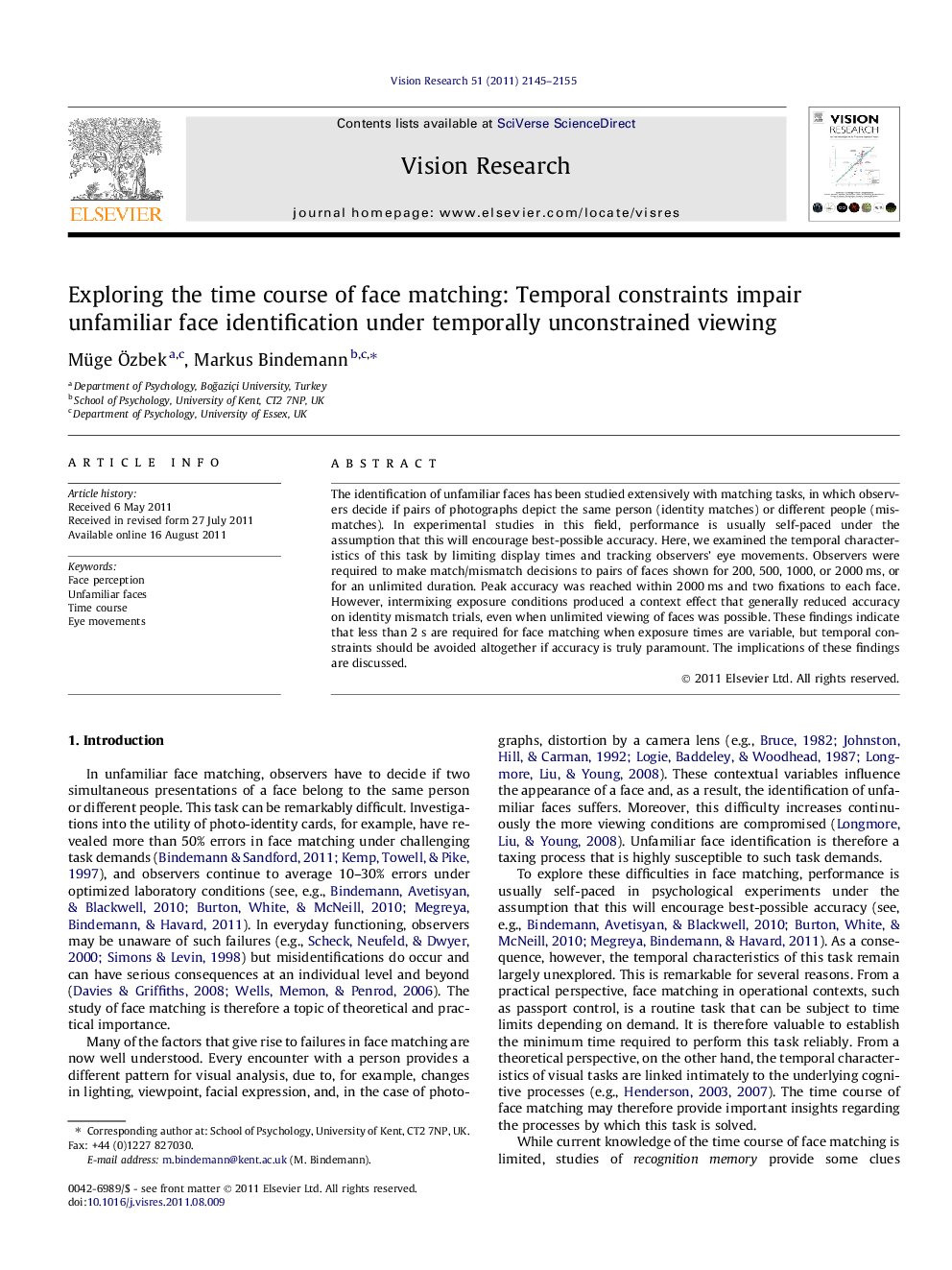| Article ID | Journal | Published Year | Pages | File Type |
|---|---|---|---|---|
| 4034208 | Vision Research | 2011 | 11 Pages |
The identification of unfamiliar faces has been studied extensively with matching tasks, in which observers decide if pairs of photographs depict the same person (identity matches) or different people (mismatches). In experimental studies in this field, performance is usually self-paced under the assumption that this will encourage best-possible accuracy. Here, we examined the temporal characteristics of this task by limiting display times and tracking observers’ eye movements. Observers were required to make match/mismatch decisions to pairs of faces shown for 200, 500, 1000, or 2000 ms, or for an unlimited duration. Peak accuracy was reached within 2000 ms and two fixations to each face. However, intermixing exposure conditions produced a context effect that generally reduced accuracy on identity mismatch trials, even when unlimited viewing of faces was possible. These findings indicate that less than 2 s are required for face matching when exposure times are variable, but temporal constraints should be avoided altogether if accuracy is truly paramount. The implications of these findings are discussed.
► This study examined the time course of unfamiliar face matching. ► Accuracy was poor with short exposures, and improved with more time. ► Intermixing exposure durations reduced accuracy even when extended viewing was possible. ► Practical implications of these findings are discussed.
